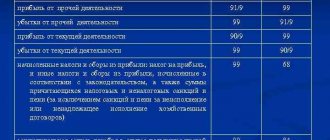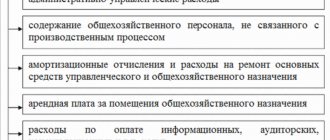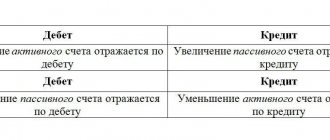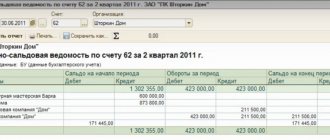Postings for the issuance of a loan are a reflection of transactions with borrowed funds in accounting. You can borrow money not only from a bank or other financial institution. The borrower of funds can also be a company that does not have a special license, for example, an employer or business partner.
Activities related to lending to citizens and organizations are subject to mandatory licensing. That is, banks, credit firms, and microfinance organizations can issue funds as a loan. In addition to licensed companies, ordinary companies whose main activity is not related to lending can also provide a loan (SCA of the Russian Federation dated 08/10/1994 No. S1-7/OP-555).
For example, founders or employees, business partners, individual entrepreneurs or ordinary citizens can receive company funds in the form of a loan. A license is not required if the loan issuance is not systematic or permanent (examples of entries for accounting for these transactions are provided below).
Features of loan accounting
According to the terms of the agreement between the borrower and the lender, not only financial assets, but also material assets can be transferred into debt. For example, fixed assets of the organization, inventories, raw materials, finished products or goods, intangible assets and other property of the company.
Reflect the provision of a loan to another organization (entry) in the amount of financial assets issued or at the cost of transferred material assets. If the loan was issued in foreign currency, the accounting department is required to make entries in rubles.
Note that the conditions for issuing loans play a key role in accounting. In this situation, the first question that should arise for the lending company is whether the transferred funds are financial investments or not.
Conditions for recognizing borrowed funds as financial investments:
- the fact of transfer of assets on loan (property for temporary use) is documented, that is, the corresponding agreement is signed between the borrower and the seller;
- the lending company officially assumes the risks of non-payment and non-repayment of the loan (credit);
- the assets transferred into debt will bring economic benefits; the lending company plans to make a profit on interest for the transfer of assets for use to another company or individual.
If assets transferred as debt do not meet these three conditions, then they cannot be classified as financial investments. In this case, an interest-free credit (loan) agreement is concluded between the borrower and the seller.
Exchange rate differences and interest on loans
Liabilities expressed in foreign currency To reduce the risk of depreciation of loan funds, banks (or other credit institutions) often express their amount in foreign currency. This is permitted by law (clause 2 of article 317 of the Civil Code of the Russian Federation). In this case, the ruble equivalent is usually determined at the official exchange rate of the corresponding currency on the day of payment (unless otherwise provided by the agreement). However, due to exchange rate changes, the borrower is unlikely to return to the lender the same amount of money that he originally received. This means that the main condition of the loan agreement, defined in paragraph 1 of Article 807 of the Civil Code of the Russian Federation, is not observed. It says that under a loan agreement, one party transfers into the ownership of the other party money or other things determined by generic characteristics, and the borrower undertakes to return to the lender the same amount of money or an equal number of other things received by him of the same kind and quality. Meanwhile, the parties are free to conclude an agreement: they have the right to enter into an agreement, both provided for and not provided for by law, and, accordingly, determine its terms. This can be done by the provisions of Article 421 of the Civil Code of the Russian Federation (clauses 2, 4). In addition, the terms of the contract may be determined by business customs. But to the situation with a ruble loan denominated in foreign currency, the analogy of the law is more applicable, which is used in cases where the relationship is not directly regulated by law (Clause 1 of Article 6 of the Civil Code of the Russian Federation). Thus, due to the similarity, such relations are regulated by the rules on loans issued in a fixed amount. Accounting for an investment loanThe general rules for accounting for loans are as follows. Based on paragraphs 3 and 4 of PBU 15/2008 “Accounting for expenses on loans and credits”* interest due to the lender is reflected separately from the principal amount of the debt. Therefore, corresponding subaccounts are opened for accounts 66 “Settlements for short-term loans and borrowings” and 67 “Settlements for long-term loans and borrowings”. * The regulation was approved by order of the Ministry of Finance of Russia dated October 6, 2008 No. 107n. INTEREST ACCOUNTING Loan expenses are reflected in accounting and reporting in the reporting period to which they relate and are recognized as other expenses. But there is one exception here. Suppose a company uses borrowed funds to carry out construction for its own needs. In this case, the building (or other capital construction object) will subsequently be taken into account as a fixed asset. Such a property is called an investment asset and interest on loans is included in its value (clause 7 of PBU 15/2008). Let us remind you: for the purposes of applying PBU 15/2008, an investment asset is understood as an object of property, the preparation of which for its intended use requires a long time and significant costs for acquisition, construction or production. Investment assets include, among other things, objects of unfinished construction, which will subsequently be accepted for accounting by the borrower or customer (investor, buyer) as fixed assets or other non-current assets. ACCOUNTING FOR EXCHANGE DIFFERENCES When accounting for loans in foreign currency, including those payable in rubles, you must also be guided by the rules of PBU 3/2006 “Accounting for assets and liabilities, the value of which is expressed in foreign currency.” The rules are as follows. Firstly, in the accounting registers, loan amounts must be reflected not only in rubles, but also in foreign currency (clause 20 of PBU 3/2006). Secondly, for accounts 66 and 67 on the date of each transaction, as well as on the last calendar day of the month, it is necessary to recalculate foreign currency liabilities (clause 7 of PBU 3/2006). Recalculation reveals discrepancies between ruble and currency estimates of liabilities that arose as a result of changes in the foreign currency exchange rate. The amounts of such differences are called exchange differences and are taken into account, according to paragraph 13 of PBU 3/2006, as other income and expenses. Please note: accounting for exchange rate differences on interest obligations does not provide for the same exceptions as for the interest itself. The value of an investment asset does not include exchange rate differences. EXAMPLE 1
Brigantina LLC is building a business center under contract.
To finance the investment project, a loan agreement was concluded to provide an amount equivalent to $1 million at 20 percent per annum. On August 3, 2009, money (rubles) arrived in the organization’s bank account. Interest is calculated by the bank monthly - on the last day of the month at the official rate. For August, their amount was $15,342.47 (USD 1,000,000: 365 days x 28 days x 20%). They were paid on September 8, 2009. In accordance with the agreement, interest is paid at the official exchange rate of the Central Bank of the Russian Federation on the day of payment. The dollar exchange rate as of August 3, 2009 was 31.1533 rubles. per US dollar, as of August 31, 2009 - 31.5687 rubles. per US dollar, as of September 8, 2009 - 31.4298 rubles. per US dollar. The accountant of Brigantina LLC reflected the transactions related to the accounting of the loan received as follows. August 3, 2009: DEBIT 51 CREDIT 67 subaccount “Principal Debt”
- RUB 31,153,300.
(31.1533 rubles x 1,000,000 USD) - a loan was received (reflected in rubles and foreign currency). August 31, 2009: DEBIT 91 subaccount “Other expenses” CREDIT 67 subaccount “Principal debt”
- 415,400 rubles.
((31.5687 rub/USD - 31.1533 rub/USD) x 1,000,000 USD) - reflects the exchange rate difference on the principal debt (increase in debt due to an increase in the exchange rate); DEBIT 08 CREDIT 67 subaccount “Interest”
- 484,341.83 rubles.
(USD 15,342.47 x RUB 31.5687/USD)—interest accrued for August (shown in rubles and foreign currency). September 8, 2009: DEBIT 67 subaccount “Interest” CREDIT 51
- 482,210.76 rubles.
(USD 15,342.47 x RUB 31.4298/USD) — interest paid (shown in rubles and foreign currency); DEBIT 67 subaccount “Interest” CREDIT 91
- 2131.07 rub.
((15,342.47 USD x (31.5687 rub/USD - 31.4298 rub/USD)) - reflects the exchange rate difference on interest obligations. Tax accounting Let's consider how costs associated with the use of borrowed funds are taken into account when taxing profits. " INTEREST" LOSSES First of all, let us recall that in tax accounting expenses on debt obligations are reflected taking into account the restrictions established by Article 269 of the Tax Code of the Russian Federation. At the same time, we note that loans expressed in conventional units are recognized as debt obligations issued in rubles. Therefore, according to the currency criterion they are comparable to loans denominated in rubles (letter of the Ministry of Finance of Russia dated July 30, 2009 No. 03-03-06/1/499). For tax purposes, the borrower recognizes interest as part of non-operating expenses, regardless of the investment nature of the loan. This follows from provisions of subclause 2 of clause 1 of Article 265 of the Tax Code of the Russian Federation. Non-operating expenses must be recognized as expenses of the current period (clause 2 of Article 318 of the Tax Code of the Russian Federation). Moreover, if the duration of the contract falls on more than one reporting period, the expense is recognized as incurred and is included in the corresponding expenses at the end of the reporting period. In the event of termination of the agreement (repayment of the debt obligation) before the expiration of the reporting period, the expense is recognized on the date of termination of the agreement or repayment of the debt obligation. This is provided for in paragraph 8 of Article 272 of the Tax Code of the Russian Federation. Consequently, interest on loans cannot be included in the initial cost of the construction project. Such clarifications are contained in letters of the Ministry of Finance of Russia dated June 18, 2009 No. 03-03-06/1/408 and dated February 3, 2009 No. 03-03-06/1/37. And if the company does not have sufficient income during the construction period, it will have to submit “unprofitable” income tax returns to the tax office. Is it possible to avoid unwanted reflection of these losses in the declaration? Let us turn to paragraph 1 of Article 252 of the Tax Code of the Russian Federation. It states that expenses are recognized as expenses provided that they are incurred to carry out activities aimed at generating income. Meanwhile, during the construction of the facility for their own needs, activities directly aimed at generating income have not yet begun. For the reason that there is no object that allows you to generate income. But the All-Russian Classifier of Types of Economic Activities OK 029-2007* (NACE Rev. 1.1) connects the concept of economic activity with the production process. The activity is characterized by production costs, the production process and the output of products (provision of services). All these signs are absent in the situation under consideration. In addition, during a crisis, construction at any stage may be frozen. * The classifier was approved by order of Rostekhregulirovaniya dated November 22, 2007. No. 329-st. Under such circumstances, the author believes that the recognition of “interest” expenses on loans received can be deferred until the facility is put into operation. This decision must be approved in the accounting policy (Article 313 of the Tax Code of the Russian Federation). One can hope that it will not raise objections from tax inspectors. Another way to avoid losses is to take into account “interest” expenses, but not reflect them in current declarations. Subsequently, if there are sufficient income, the company has the right to submit updated declarations for previous years, in accordance with paragraph 1 of Article 81 of the Tax Code of the Russian Federation, and recognize these expenses in the “mode” of carrying forward losses in accordance with the provisions of Article 283 of the Tax Code of the Russian Federation. NO ACTIVITY - NO LOSS
The objects of classification in OKVED are types of economic activity.
Economic activity occurs when resources (equipment, labor, technology, raw materials, materials, energy, information resources) are combined into a production process for the purpose of producing products (providing services). Economic activity is characterized by production costs, the production process and the release of products or the provision of OK 029-2007 (NACE rev. 11)). THE DIFFERENCES ARE NOT ONLY SUMMARY...Now let’s figure out how changes in the foreign currency exchange rate affect the taxation of profits. To do this, let us turn to the letter of the Ministry of Finance of Russia dated May 15, 2009 No. 03-03-06/1/324. In it, officials explained that an obligation expressed in foreign currency, but payable in Russian rubles, should be considered as an obligation expressed in conventional units. A change in the exchange rate of conventional monetary units generates income and expenses in the form of differences in amounts during transactions of sale (capitalization) of goods, work, services, property rights (clause 11.1 of Article 250, subclause 5.1 of clause 1 of Article 265 of the Tax Code of the Russian Federation). Interest just characterizes the cost of the lender's services. And expenses in the form of interest paid, recognized on an accrual basis, do not correspond to the actual amount of interest paid. Hence the amount differences. However, these considerations are not applicable to the amount of the principal debt expressed in conventional units. The fact is that loan repayment, according to subparagraph 1 of paragraph 3 of Article 39 of the Tax Code of the Russian Federation, is not a sale. For this reason, the discrepancy between the received and returned amounts of the principal debt does not fall under the definition of the amount difference. Nevertheless, a decrease in the exchange rate of a conventional unit creates an economic benefit for the borrower (Article 41 of the Tax Code of the Russian Federation), and an increase in the exchange rate, on the contrary, generates additional costs in accordance with paragraph 1 of Article 252 of the Tax Code of the Russian Federation. In the first case, the borrower has non-operating income that is not directly named in Article 250 of the Tax Code of the Russian Federation, but this does not prevent their recognition, since the list of non-operating income is not closed. If the borrower, due to an increase in the exchange rate, returns a larger amount of money than he received, then the difference should be considered as a fee for using the loan provided for in the agreement. For tax purposes, it must be taken into account in accordance with Article 269 of the Tax Code of the Russian Federation. In this case, the maximum amount of expenses for such a difference is determined taking into account the amount of interest accrued on the loan. Unlike accounting, tax legislation does not provide for the reflection of differences in the composition of income (expenses) at the end of the reporting (tax) period. Therefore, all differences that arise must be taken into account on the date of payment of the relevant debt. WHEN DOES THE AMOUNT DIFFERENCE OCCUR?
According to clause 11.1 of Article 250 of the Tax Code of the Russian Federation, an amount difference is formed if the amount of obligations and claims incurred, calculated at the rate of conventional monetary units established by agreement of the parties on the date of sale (receipt) of goods (work, services), property rights, does not correspond to what was actually received (paid) ) amount in rubles.
Please note: according to officials of the Ministry of Finance of Russia, in the case of making an advance payment (full or partial) for the paid price of the goods, income (expenses) in the form of the amount difference (when payments are made in rubles) does not arise (letter dated September 4, 2008 No. 03 -03-06/1/508). EXAMPLE 2
Under a loan agreement drawn up in conventional monetary units, Mayak CJSC, due to the increase in the currency exchange rate.
e. repaid the debt in an amount exceeding what was received by 100,000 rubles. The amount of interest accrued for the reporting period is RUB 50,000. Due to the growth of the exchange rate i.e. interest paid - 52,000 rubles, that is, 2,000 rubles. more than accrued. Thus, the total cost of borrowing costs for Mayak CJSC amounted to 152,000 rubles. (100,000 + 50,000 + 2000). Of these, 2000 rubles. - the amount difference is recognized as an expense in tax accounting in full. But the amount is 100,000 rubles. For tax purposes, it is not recognized as an independent expense, but is added to the amount of accrued interest. Let’s assume that the maximum amount of interest subject to recognition as a company expense according to the rules of Article 269 of the Tax Code of the Russian Federation is 120,000 rubles. This value must be compared with the cost of the lender’s services, equal to 150,000 rubles. (100,000 + 50,000). Since the cost of services exceeds the allowable amount, it is partially recognized in tax accounting - in the amount of 120,000 rubles. Thus, the total amount of non-operating expenses taken into account when taxing the profits of Mayak CJSC will be 122,000 rubles. (120,000 + 2000). The article was published in the journal “Accounting in Construction” No. 12, December 2009.









